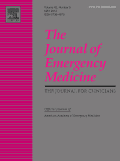
JOURNAL OF EMERGENCY MEDICINE
Scope & Guideline
Fostering innovation in urgent medical practices.
Introduction
Aims and Scopes
- Emergency Medical Services and Systems:
Research related to the organization, delivery, and effectiveness of emergency medical services (EMS) across various settings, including prehospital care and hospital emergency departments. - Trauma and Injury Management:
Studies focusing on the epidemiology, management, and outcomes of trauma patients, including innovative approaches to trauma care and the assessment of injury severity. - Public Health and Emergency Care:
Investigations into the intersection of public health issues and emergency medicine, including responses to pandemics, community health determinants, and disaster preparedness. - Education and Training in Emergency Medicine:
Research exploring educational methodologies, curriculum development, and competency assessments for healthcare professionals in emergency medicine. - Palliative and Critical Care:
Studies addressing the provision of palliative care in emergency settings, along with critical care practices and their implications for patient outcomes. - Global and Community Health:
Research that examines emergency medicine practices in the context of global health challenges, with a focus on resource-limited settings and community-based interventions.
Trending and Emerging
- Impact of COVID-19 on Emergency Care:
Research addressing the implications of the COVID-19 pandemic on emergency care systems, including changes in patient presentations, resource allocation, and healthcare worker experiences. - Integration of Technology in Emergency Medicine:
Increasing utilization of technology, such as telemedicine and mobile health applications, to enhance emergency care delivery and patient outcomes. - Mental Health and Emergency Care:
A growing focus on mental health issues within emergency settings, particularly regarding suicidal behavior and psychological support for trauma patients. - Emergency Care in Resource-Limited Settings:
An emphasis on studies that explore innovative solutions and adaptations in emergency care practices specifically tailored for low- and middle-income countries. - Interdisciplinary Approaches to Emergency Medicine:
Emerging research that incorporates interdisciplinary perspectives, including collaborations among public health, emergency medicine, and community organizations to improve care delivery.
Declining or Waning
- Traditional Emergency Medicine Protocols:
There seems to be a waning interest in studies solely focused on traditional emergency medicine protocols without innovative adaptations, as the field moves towards more context-specific and resource-sensitive approaches. - Non-urgent Care in Emergency Settings:
Research exploring non-urgent conditions presenting to emergency departments appears to be less frequent, possibly due to an increasing emphasis on acute and critical care management. - Pharmacological Interventions in Emergency Care:
While still relevant, studies focused exclusively on pharmacological interventions, particularly in isolation from broader care strategies, have become less prominent. - Generalized Emergency Medicine Training:
There is a noticeable decline in research centered on generalized training programs for emergency medicine, with a shift towards specialized and context-specific training initiatives. - Basic Life Support Training:
Although important, there has been a reduction in primary studies focusing solely on basic life support training, as the focus shifts to comprehensive emergency care training that includes advanced skills and interdisciplinary approaches.
Similar Journals

Notfall & Rettungsmedizin
Elevating the standards of emergency care research.Notfall & Rettungsmedizin is a leading journal in the field of Emergency Medicine, published by Springer in Germany. With a focus on advancing the science and practice of emergency care, this journal offers a platform for original research, critical reviews, and case studies that address the latest challenges and innovations in the field. The journal ranks in the Q2 category of Emergency Medicine for 2023, reflecting its commitment to high-quality scholarship and impactful research, evidenced by its Scopus ranking of #51 out of 109, placing it within the 53rd percentile. Although it does not provide open access, the content is invaluable for researchers, healthcare professionals, and students engaged in emergency medicine. From its inception in 1999 to its continuous publication through 2024, Notfall & Rettungsmedizin remains a vital resource for disseminating knowledge and fostering professional development in emergency care worldwide.

Turkish Journal of Emergency Medicine
Delivering vital research for today's healthcare heroes.Turkish Journal of Emergency Medicine, published by Wolters Kluwer Medknow Publications, is a premier Open Access journal dedicated to advancing the field of emergency and critical care medicine. With an ISSN of 2452-2473, the journal has established a global readership since its inception in 2014, ensuring that groundbreaking research is accessible to all. Situated in Turkey, this journal has been recognized for its significant contributions to the medical community, currently holding a Q2 rank in both Critical Care and Intensive Care Medicine and Emergency Medicine as of 2023. The journal aims to publish insightful articles that cover a wide range of topics within its scope, making it a crucial resource for researchers, healthcare professionals, and students who are committed to improving patient outcomes in emergency settings. Accessible online, it fosters collaboration and knowledge sharing across borders, positioning itself as an essential platform for the latest advancements in this critical discipline.
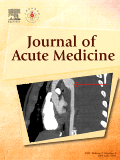
Journal of Acute Medicine
Connecting professionals with cutting-edge acute medicine insights.Journal of Acute Medicine is a pivotal platform for disseminating cutting-edge research within the fields of Critical Care and Intensive Care Medicine and Emergency Medicine. Published by the Taiwan Society of Emergency Medicine in the Netherlands, this journal serves as a vital resource for healthcare professionals and researchers devoted to advancing acute medical practice. With an ISSN of 2211-5587 and an E-ISSN of 2211-5595, the journal features a collection of high-quality articles that focus on the latest developments and challenges facing emergency healthcare systems. Since its inception in 2011, the journal has achieved a respectable Q3 ranking in both critical care and emergency medicine categories, demonstrating its commitment to scholarly excellence. Although it currently does not operate as an open-access publication, the journal provides a critical forum for exchanging knowledge, fostering collaborations, and enhancing clinical practices, ensuring that it remains an essential read for those involved in acute medical care.
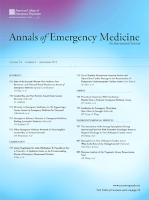
ANNALS OF EMERGENCY MEDICINE
Your Gateway to Essential Emergency Medicine DiscoveriesANNALS OF EMERGENCY MEDICINE is a leading peer-reviewed journal dedicated to the advancement of emergency medicine, published by MOSBY-ELSEVIER. With an impressive impact factor and a prestigious ranking of Q1 in the field, this journal serves as an essential platform for disseminating innovative research findings, clinical practices, and policy developments within emergency medicine. Recognized for its high-quality contributions, it ranks #6 out of 109 in Scopus's Emergency Medicine category, placing it in the top 6% of journals in the field. Since its inception in 1980, ANNALS OF EMERGENCY MEDICINE has consistently provided valuable insights to researchers, practitioners, and students, fostering a deeper understanding of emergency care challenges and solutions. While the journal is not open access, it remains a cornerstone for those seeking to stay at the forefront of emergency medicine advancements, providing access to critical research within the field.

European Journal of Trauma and Emergency Surgery
Connecting Knowledge and Practice in Emergency MedicineThe European Journal of Trauma and Emergency Surgery, published by SPRINGER HEIDELBERG, stands as a pivotal resource in the field of trauma and emergency medicine. With an ISSN of 1863-9933 and E-ISSN 1863-9941, this esteemed journal has been disseminating vital research since its inception in 2007, with ongoing contributions expected through 2024. It holds a reputable impact factor substantiated by its placement in the Q2 category across multiple disciplines, including Critical Care and Intensive Care Medicine, Emergency Medicine, Orthopedics and Sports Medicine, and Surgery. This distinction highlights the journal's commitment to high-quality, impactful research, as reflected in its notable Scopus rankings that place it within the top percentiles of its respective fields. Researchers, professionals, and students will find a wealth of scholarly articles that provide insights into contemporary practices and innovations, reinforcing the journal's role as a vital conduit for knowledge and advancements in trauma and surgical care.

Journal of Emergencies Trauma and Shock
Elevating standards in emergency medicine through open-access research.The Journal of Emergencies Trauma and Shock, published by Wolters Kluwer Medknow Publications, is a premier open-access journal dedicated to advancing the field of emergency medicine. With an ISSN of 0974-2700 and an E-ISSN of 0974-519X, this journal has been a vital resource since its inception in 2008, providing a platform for original research, reviews, and clinical studies pertinent to trauma and shock management. The journal is recognized for its significant contributions to the field, illustrated by its strong standing as a Q2 journal in Emergency Medicine and ranking #34/109 in Scopus, with a commendable 69th percentile. Based in Mumbai, India, the journal not only reaches local practitioners but also caters to an international audience with its commitment to disseminating high-quality research that influences practice and policy in emergency settings. The publication is especially respected for its innovative approaches and practical findings that inform healthcare professionals on the front lines of trauma care. Researchers, practitioners, and students alike will find invaluable insights and data that help to shape the future of emergency medicine.

Australasian Emergency Care
Transforming Patient Outcomes through Innovative Research.Australasian Emergency Care, published by ELSEVIER SCI LTD, stands out as a premier journal in the field of Emergency Nursing, currently holding a prestigious Q1 ranking and positioned in the top 85th percentile according to Scopus metrics. With an E-ISSN of 2588-994X, this journal has been a vital platform for disseminating cutting-edge research since its inception in 2018. Focused on enhancing the practice, education, and research surrounding emergency nursing, Australasian Emergency Care serves as an essential resource for clinicians, educators, and researchers, offering access to a wide array of high-quality peer-reviewed articles. The importance of this journal lies in its commitment to improving patient outcomes through evidence-based practices and innovations in emergency care, making it a pivotal resource for anyone dedicated to advancing their knowledge and expertise in this critical field.
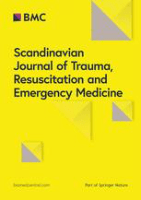
Scandinavian Journal of Trauma Resuscitation & Emergency Medicine
Leading the Charge in Trauma and Emergency InnovationsThe Scandinavian Journal of Trauma Resuscitation & Emergency Medicine, published by BMC, stands as a leading open-access platform dedicated to advancing the fields of trauma, resuscitation, and emergency medicine since its inception in 2008. With an ISSN of 1757-7241 and an impressive track record, this journal has established itself in the top quartile of critical care and emergency medicine, achieving Q1 rankings in both categories for 2023. Its Scopus rankings further underscore its importance, placing it among the top 11 journals in emergency medicine and the 23rd in critical care and intensive care medicine, signaling a strong impact within the academic community. As we converge toward 2024, the journal continues to provide researchers, clinicians, and students with valuable access to cutting-edge research and developments in the sector, contributing significantly to knowledge, practice, and policy in emergency care. Located in the heart of the United Kingdom, the journal remains dedicated to its mission of fostering innovation and dissemination of high-quality research, ensuring that vital medical advancements reach those who need them most.
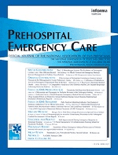
Prehospital Emergency Care
Delivering Excellence in Emergency Medicine and Nursing.Prehospital Emergency Care is a leading journal in the fields of emergency medicine and nursing, published by Taylor & Francis Inc. With a significant impact on both disciplines and recognized in the first quartile (Q1) of Emergency Medicine and Emergency Nursing categories for 2023, this journal reflects the highest standards of scientific rigor and innovation. Each issue offers valuable insights into the latest research, clinical practices, and advancements in prehospital emergency care, making it an essential resource for researchers, healthcare professionals, and students alike. The journal covers a broad array of topics and aims to disseminate knowledge that enhances the field and improves patient outcomes. With its commitment to excellence, Prehospital Emergency Care plays a critical role in shaping the future of emergency services globally.
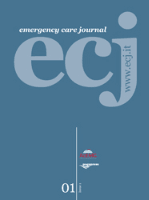
Emergency Care Journal
Fostering Global Collaboration in Emergency Care ResearchThe Emergency Care Journal is a vital open-access publication dedicated to the field of emergency medical services and nursing, published by PAGEPRESS PUBL. Since its inception in 2005, the journal has aimed to provide a platform for researchers, clinicians, and scholars to share knowledge and advance practices in the critical domain of emergency care. With an ISSN of 1826-9826 and an E-ISSN of 2282-2054, the journal is committed to enhancing accessibility and reaching a global audience. Although its Scopus rankings reflect a competitive landscape, particularly in the ranks of Health Professions and Emergency Medicine, the journal continues to serve as an essential resource for emerging studies and professional insights. Nestled in Italy, the journal seeks to bridge the gap between academic research and real-world application, ultimately improving patient care and outcomes in emergency settings. As it converges into the years 2023 and 2024, Emergency Care Journal stands poised to foster scholarly discussions and innovative research that are crucial to the evolving landscape of emergency medicine.